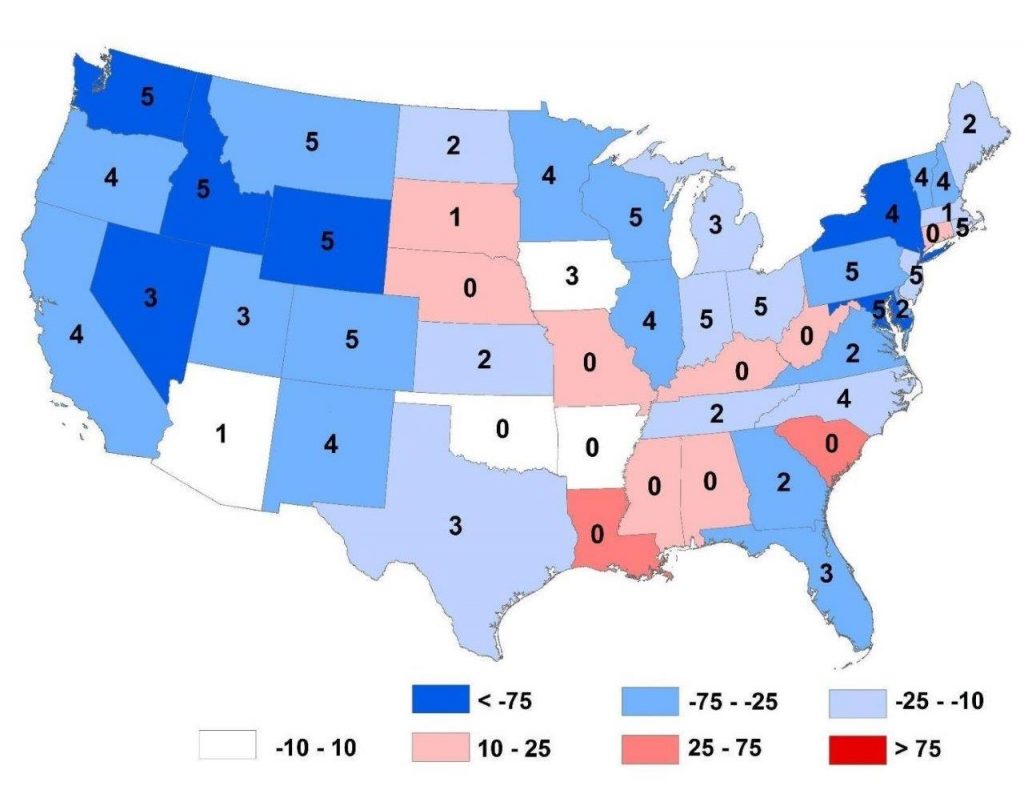18 May 2017
WASHINGTON, DC — A nationwide analysis of water use over the past 30 years finds that there is a disconnect between rural and urban areas, with most urban areas becoming more water efficient and most rural areas becoming less and less efficient over time.
“Understanding water use is becoming increasingly important, given that climate change is likely to have a profound impact on the availability of water supplies,” said Sankar Arumugam, a professor of civil, construction and environmental engineering at North Carolina State University in Raleigh and lead author of a new study on the work. “This research helps us identify those areas that need the most help, and highlights the types of action that may be best suited to helping those areas.”
The new paper in Earth’s Future, a journal of the American Geophysical Union, stems from a National Science Foundation-funded, interuniversity research project which focuses on understanding how water sustainability in the United States has changed over the past 30 years because of climate change and population growth.
For this paper, researchers evaluated water use data at the state and county level for the 48 contiguous states. Specifically, the researchers looked at water-use efficiency, measured as per capita consumption, in 5-year increments, from 1985 to 2010.
“This is the first systematic evaluation of water use across the continental U.S.,” Arumugam said. “We found that some states – including Washington, Pennsylvania and Wyoming – were becoming more efficient every five years. Meanwhile, other states – such as South Carolina, Oklahoma and Mississippi – have gotten worse every five years.”

Patterns of water use efficiency across the continental United States. Color-coded values indicate the change in per-capita consumption in gallons per day per person between 1985 and 2010. Large numbers indicate the number of years per-capita withdrawals decreased from 1985 to 2010.
Credit: AGU/Earth’s Future/Sankar Arumugam.
But a look at the county-level data reveals what may be the most important finding: most rural counties are getting less efficient, while most urban counties are getting more efficient.
“In other words, as we are facing a more uncertain future regarding water resources, rural counties are being left behind,” Arumugam said.
The researchers found that investment in new water-efficiency technologies, and retrofitting existing water infrastructure, are big reasons for the improvement in urban areas.
“Rural counties appear to lack the resources, the political will, or both, to keep pace,” Arumugam said.
Another important finding is that technologies and strategies focused on efficiency – as opposed to large-scale projects, such as building new reservoirs – have been extremely successful. These efforts have allowed urban areas to avoid sharp increases in water use, even as their populations have grown significantly.
“There may be a role for huge infrastructure projects at some point, but these findings underscore the value of focusing on efficiency measures – and the need to pursue those measures in rural counties,” Arumugam said.
###
The American Geophysical Union is dedicated to advancing the Earth and space sciences for the benefit of humanity through its scholarly publications, conferences, and outreach programs. AGU is a not-for-profit, professional, scientific organization representing 60,000 members in 137 countries. Join the conversation on Facebook, Twitter, YouTube, and our other social media channels.
Notes for Journalists
This research article is open access. A PDF copy of the article can be downloaded at the following link: http://onlinelibrary.wiley.com/doi/10.1002/2016EF000511/pdf.
Journalists and PIOs may also order a copy of the final paper by emailing a request to Lauren Lipuma at [email protected]. Please provide your name, the name of your publication, and your phone number.
Neither the paper nor this press release is under embargo.
“Synthesis of Public Water Supply Use in the U.S.: Spatio-temporal Patterns and Socio-Economic Controls”
Authors:
Sankar Arumugam, S.B. Seo, R. Bhowmik, G. Mahinthakumar and E.Z. Berglund: North Carolina State University, Raleigh, North Carolina, U.S.A.;
J.L. Sabo, K.L. Larson: Arizona State University, Tempe, Arizona, U.S.A.;
T. Sinha: Texas A&M University, College Station, Texas, U.S.A.;
K. Kunkel: Cooperative Institute of Satellites and Climate, North Carolina State University, Asheville, North Carolina, U.S.A.;
J. Kominoski: Florida International University, Miami, Florida, U.S.A.
Contact information for the authors:
Sankar Arumugam: +1 (919) 515-7700, [email protected]
Lauren Lipuma
+1 (202) 777-7396
[email protected]
NC State Press Contact:
Matt Shipman
+1 (919) 515-6386
[email protected]